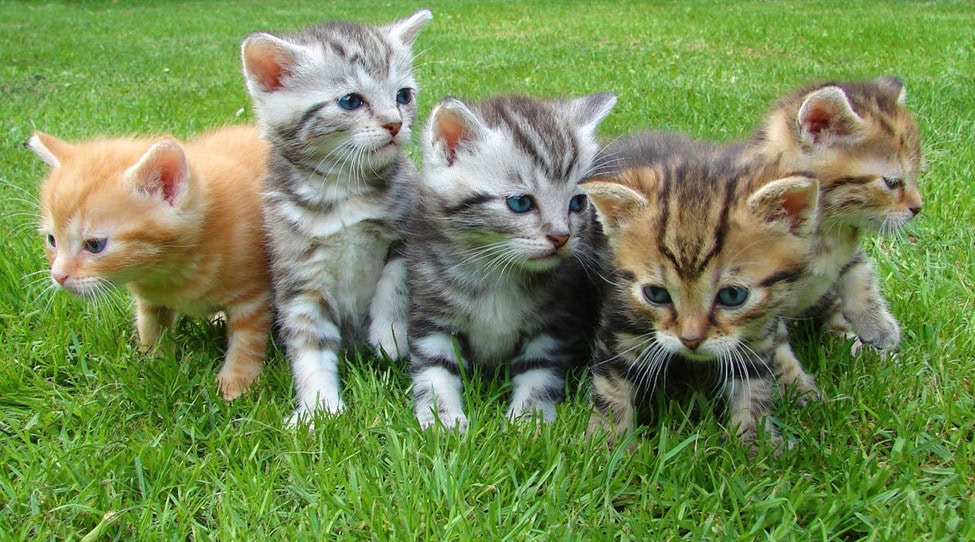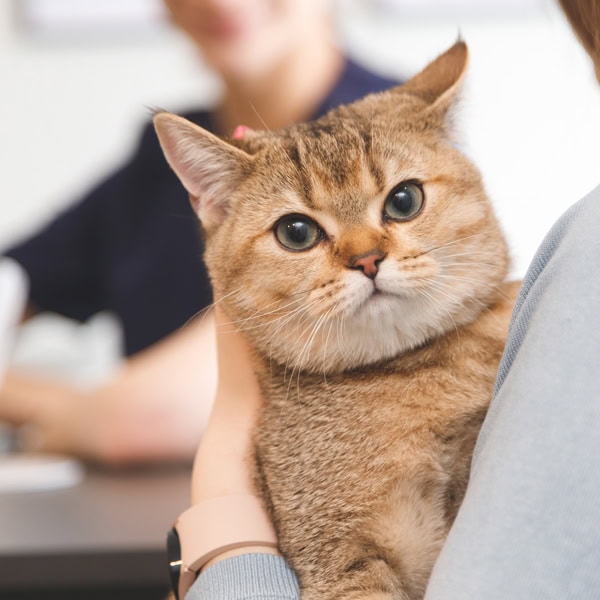Have you ever wondered why your cat scratches the furniture or hides when visitors come over? Understanding common cat behavior can help solve these everyday puzzles and bring you closer to your feline friend. In this article, we’ll explore the top 15 cat behaviors, breaking down what they mean and how to handle them. By learning about these behaviors, you can make your cat happier and create a more peaceful home. Let’s dive into the world of your cat’s quirks and see how understanding them can make a big difference!

Table of Contents
Toggle1. Purring
Most people associate purring with a content and relaxed cat. However, cats also purr when they’re feeling anxious, in pain, or under stress. This soothing sound serves multiple purposes: it can be a way for cats to comfort themselves, communicate with their humans, or even signal an underlying health issue.
What to Do: Observe the context in which your cat is purring. If they’re purring while being petted or lying comfortably, they’re likely happy. But if purring is combined with hiding or changes in behavior, it might be time to consult your vet to check for any health problems.
2. Kneading
When cats knead with their paws, it’s a behavior that dates back to their kittenhood. This action, often referred to as “making biscuits,” involves pressing their paws alternately against a soft surface. It’s a comforting gesture that harks back to when kittens kneaded their mother’s belly to stimulate milk flow.
What to Do: If your cat is kneading on you, it’s a sign they feel safe and comfortable. Providing a designated soft area, like a cozy blanket or bed, can help manage this behavior, especially if they tend to knead intensely.
3. Scratching
Scratching is an instinctive action that serves multiple purposes for cats. It keeps their claws healthy and sharp, while also marking their territory. Additionally, scratching provides a way for cats to stretch their muscles and alleviate stress.
What to Do: To redirect your cat’s scratching away from furniture, offer scratching posts or pads. Place these in areas where your cat enjoys scratching and use catnip or treats to encourage their use. This will help keep your furniture safe and satisfy your cat’s natural instincts.
4. Chirping or Trilling
Chirping or trilling is a unique vocalization that cats use to communicate with humans or other animals. It’s a friendly, high-pitched sound often made when a cat is happy or excited.
What to Do: Respond positively to your cat’s chirps or trills with affection or interaction. This behavior indicates your cat is in a good mood and wants to engage with you, so your response can reinforce their positive feelings and strengthen your bond.
5. Hiding
Hiding is a behavior that cats often display when they’re feeling stressed, unwell, or overwhelmed. It gives them a sense of security and a quiet retreat from disturbances.
What to Do: Ensure your cat has access to a safe, quiet hiding spot where they can retreat when needed. If your cat is hiding frequently or showing signs of distress, it’s important to provide a comfortable environment and consult a vet if the behavior persists.
6. Tail Twitching
Tail twitching can convey a range of emotions in cats, from excitement and curiosity to irritation or agitation. The way a cat’s tail moves can give you clues about their mood.
What to Do: Pay attention to your cat’s overall body language to interpret the meaning of tail twitching. If their tail is twitching during play, it’s a sign of excitement. If it happens in a tense situation, give your cat some space to avoid escalating their stress.
7. Bunting (Head-Butting)
Bunting, or head-butting, is when a cat rubs their head against you or objects. This action allows cats to mark their territory using scent glands on their head and also serves as a gesture of affection.
What to Do: Enjoy and reciprocate the head-butting as it’s a sign your cat trusts and feels comfortable with you. Gently pet your cat in response to reinforce the positive interaction and make them feel even more secure.
8. Zoomies
The “zoomies” refer to sudden bursts of high energy where a cat races around the house at top speed. This playful behavior is common in younger cats or during moments of excitement.
What to Do: Provide plenty of space and interactive toys to help your cat channel their energy safely. Engaging in play sessions can also help manage these bursts and keep your cat happy and healthy.
9. Slow Blinking
Slow blinking, sometimes called a “cat kiss,” is a gesture of trust and relaxation. Cats use this behavior to show that they feel safe and comfortable in your presence.
What to Do: Mimic your cat’s slow blink to show that you are calm and friendly. This small act can significantly boost trust and deepen the connection between you and your cat, enhancing their sense of security.
10. Grooming
Grooming is a regular part of a cat’s routine, helping them keep their coat clean and free of parasites. However, excessive grooming can sometimes indicate stress, allergies, or other health issues.
What to Do: Regularly brush your cat to help with their grooming needs and prevent hairballs. If you notice excessive grooming or skin problems, consult a vet to address any potential health issues.
11. Eating Grass
Many cats eat grass, which can help with digestion or induce vomiting to clear their stomach of indigestible matter. This behavior is observed in cats whether they live indoors or outdoors.
What to Do:Offer your cat safe, chemical-free grass or cat grass to nibble on. Monitor their grass consumption to ensure it doesn’t lead to gastrointestinal issues. If your cat’s grass-eating habits seem excessive, seek advice from your vet.
12. Burying Food
Burying or hiding food is a behavior rooted in a cat’s wild ancestry, where they would hide food from potential thieves. This instinct can persist in domestic cats.
What to Do: Ensure your cat’s food is provided consistently and is easily accessible. If your cat frequently buries food, consider smaller, more frequent meals and provide environmental enrichment to address any insecurity they might feel.
13. Staring
Direct staring can sometimes be interpreted as a challenge or threat in the animal world. However, in cats, it often indicates curiosity, affection, or a desire for interaction.
What to Do: If your cat is staring at you in a relaxed manner, it’s generally a sign of trust. Respond with a gentle blink or a soft touch to show you are approachable and calm, reinforcing your bond.
14. Play-Biting
Play-biting is a common behavior in kittens and young cats, helping them practice their hunting skills and engage in playful activities.
What to Do: Redirect play-biting to toys instead of hands or feet. Offering a range of engaging toys helps direct your cat’s energy in a positive way, keeps them amused, and prevents the development of biting habits.
15. Pacing
Pacing can be a sign of anxiety, stress, or discomfort. Cats may pace when they’re hungry, bored, or feeling unwell, signaling that something might be wrong in their environment.
What to Do: Make sure your cat’s basic needs are met, including food, clean litter, and mental stimulation. If pacing is frequent or combined with other signs of distress, consult a vet to rule out any underlying health issues.
FAQs About Understanding Cat Behavior
Q1: Why does my cat rub their face against me?
A1: When your cat rubs their face against you, it’s a sign of affection and trust. They are marking you with their scent, which is a way of claiming you as part of their territory and showing that they feel comfortable with you.
Q2: Why does my cat hiss or growl at me sometimes?
A2: Hissing or growling usually indicates that your cat is feeling threatened, scared, or annoyed. It’s their way of warning you to back off. Ensure you respect their space and avoid sudden movements that could be perceived as threatening.
Q3: What should I do if my cat is constantly meowing?
A3: Excessive meowing can be a sign of various issues, from boredom or hunger to medical problems. Make sure your cat’s basic needs are met, such as food, water, and stimulation. If the meowing persists or is accompanied by other symptoms, consult your vet to rule out health concerns.
Conclusion: In this article, we’ve explored the top 15 common cat behaviors to help you understand your feline friend better. From purring and kneading to hiding and pacing, each behavior gives clues about how your cat is feeling. By learning what these actions mean, you can address their needs more effectively and strengthen your bond. Understanding cat behavior helps you create a happier and healthier environment for your cat, making your time together more enjoyable. Use these insights to improve your cat’s well-being and deepen your connection.




